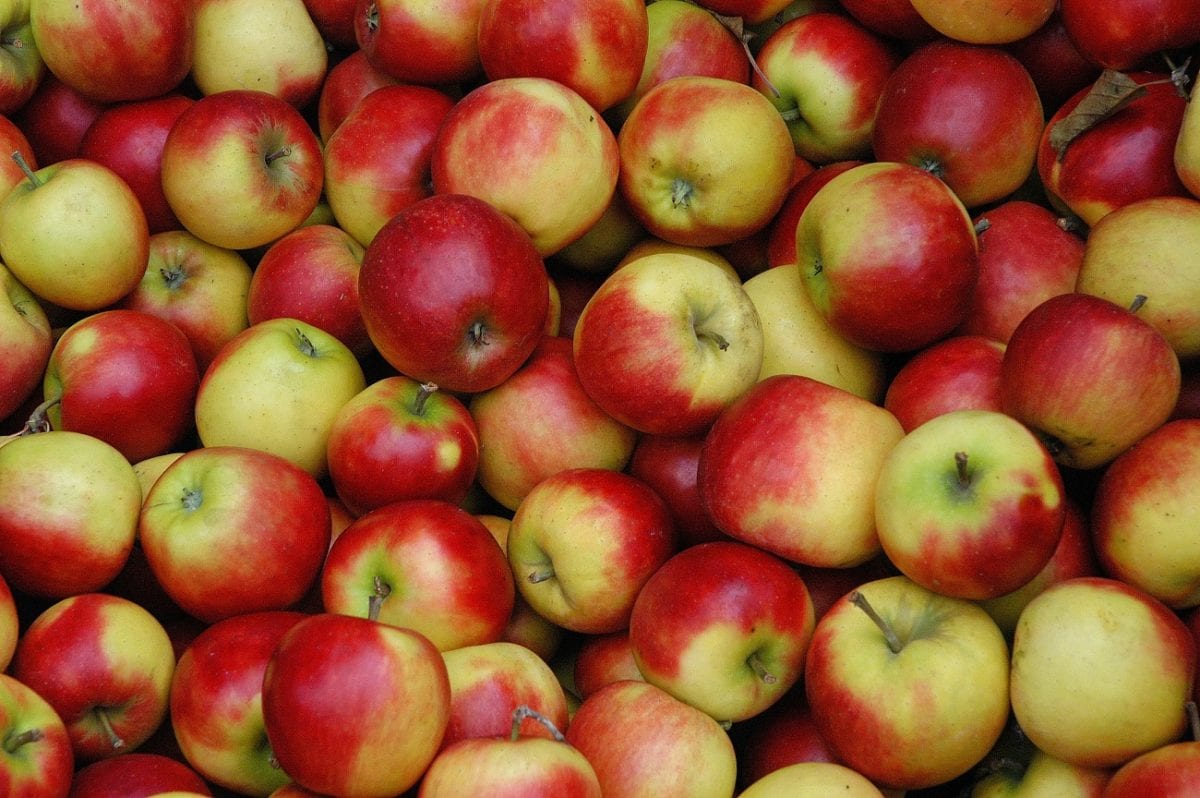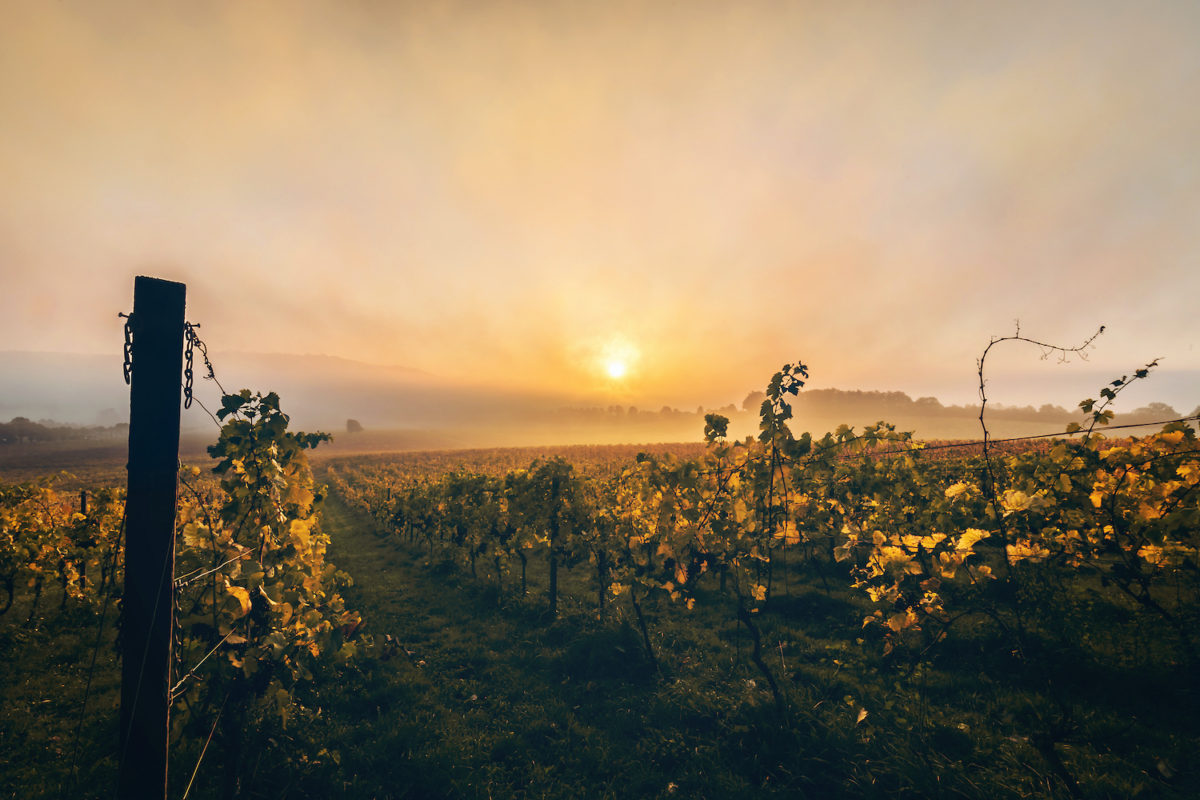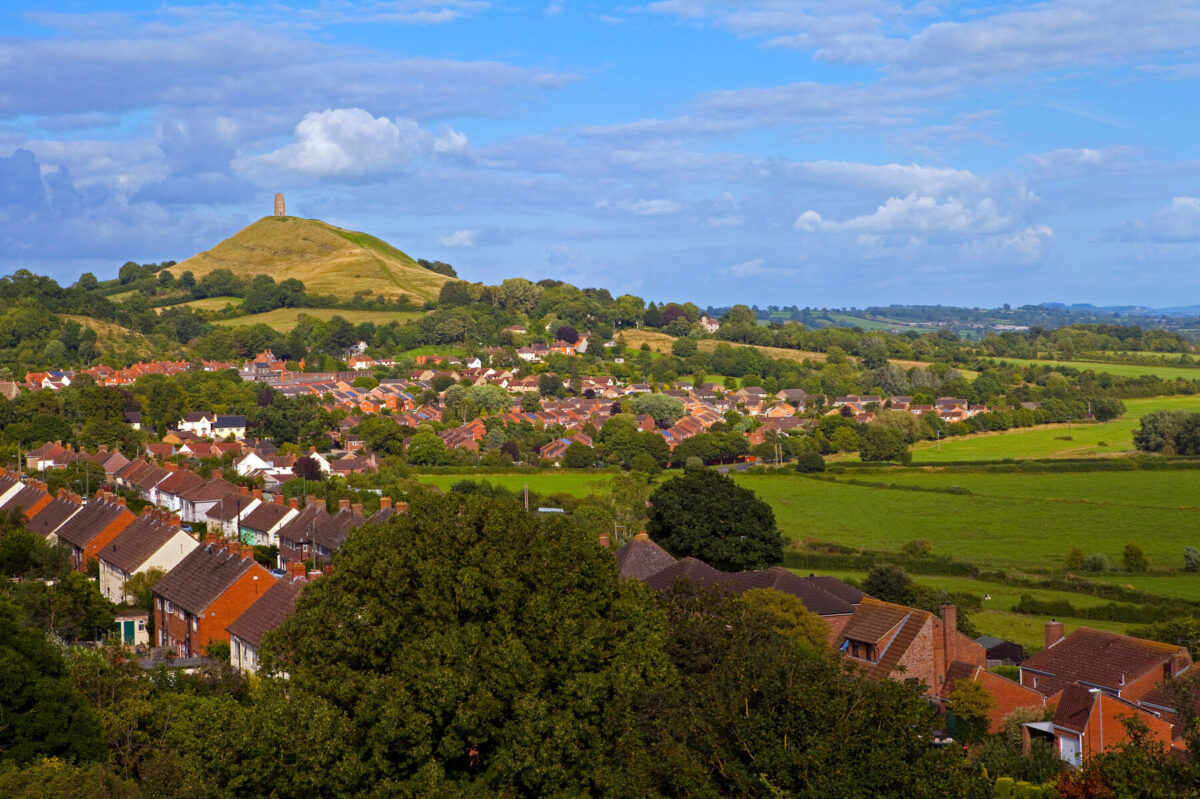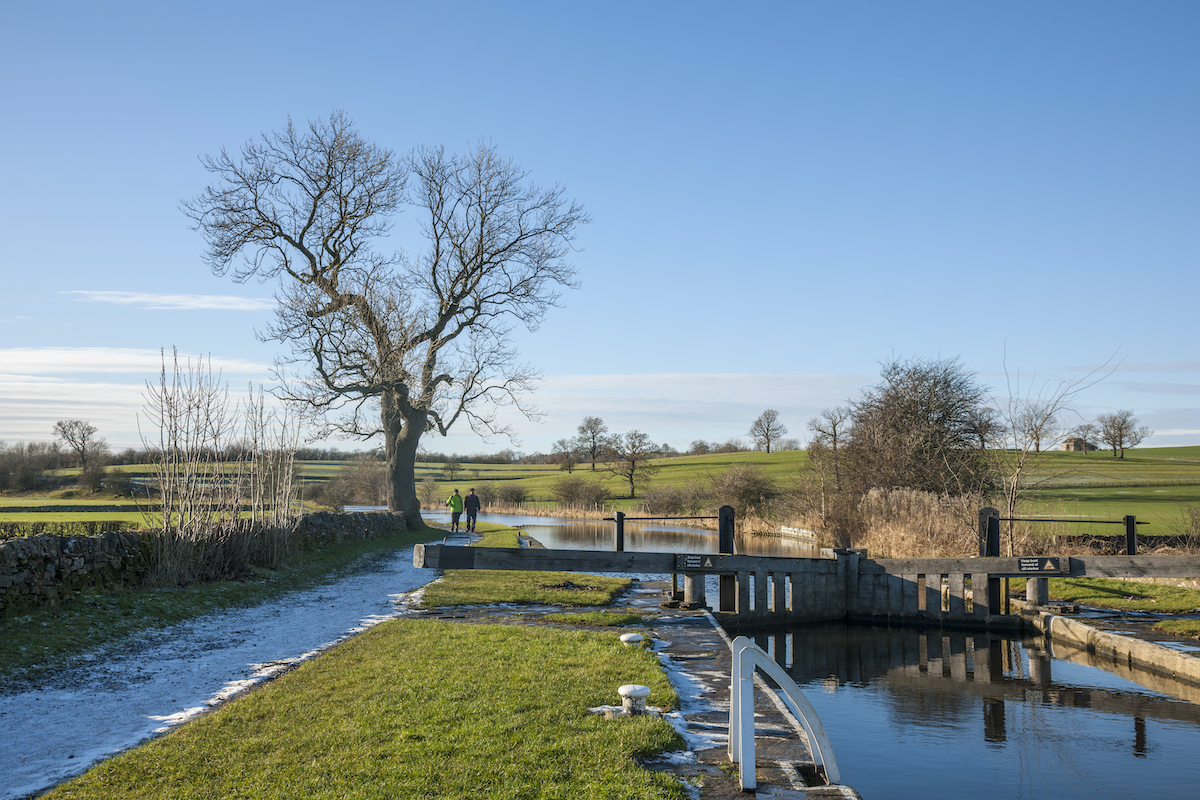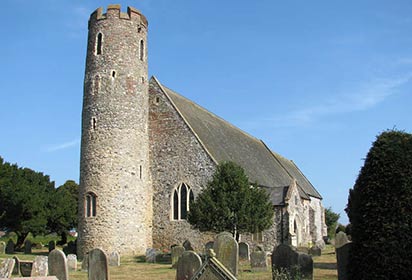Somerset has so much to offer the Slow traveller: coastal paths and bracing moorland walks, ancient ruins and castellated hamstone churches, wild wetland reserves with brilliant birdwatching, local farmers’ markets, and, as you’d expect, endless possibilities for cider tasting.
Norm Longley, author of Slow Travel Somerset
Nowhere else in England does Slow Travel quite like Somerset, a county of infinite variety and immense beauty and the perfect destination for a short break close to home. Competing for attention are wild, windswept upland areas like the Mendips and Exmoor, where you can walk to your heart’s content; exhilarating expanses of beach and some of Britain’s highest sea cliffs; spectacular limestone ravines pockmarked with complex cave systems; ancient stone circles and long barrows.
Across the county, narrow, high hedgerow lanes wend their way through fertile orchards – the results of which sustain Somerset’s rich tradition of cider-making – and golden hamstone villages (Martock and Montacute spring to mind) invariably boasting some gorgeous medieval church, among England’s finest no less.
Then there are the Roman and Georgian glories of Bath, one of just two cities in Somerset, along with tiny Wells, home to one of England’s great cathedrals. Charming market towns such as Axbridge, Castle Cary and Frome beckon too. In the midst of it all lie the magical, mysterious Levels, whose sprawling wetlands and sword-straight dykes are home to world-class birdwatching and much else besides.
Somerset’s idiosyncrasies extend to its natives, from cider makers Roger Wilkins and Julian Temperley to the assortment of eccentric characters you’ll find ambling around Glastonbury, a place steeped in ancient mythology and religious lore, as is the county itself – this is, after all, the land of Arthurian legend. For sure, things move at a drowsier pace round these parts. Whether you’re a seasoned resident or occasional visitor, Somerset is a place to wander, ponder and drink in the sights – and the cider, naturally.
Bradt on Britain – our Slow Travel approach
Bradt’s coverage of Britain’s regions makes ‘Slow Travel’ its focus. To us, Slow Travel means ditching the tourist ticklists – deciding not to try to see ‘too much’ – and instead taking time to get properly under the skin of a special region. You don’t have to travel at a snail’s pace: you just have to allow yourself to savour the moment, appreciate the local differences that create a sense of place, and celebrate its food, people and traditions.
For more information, check out our guide to Somerset
Food and drink in Somerset
The taste of Somerset is undoubtedly that of two things: cider and cheese. Despite competing claims from the likes of Herefordshire and Devon, Somerset is cider king, no question. Indeed cider has been produced in Somerset since the 11th century, making it one of the country’s original cider-making counties; as well as being a jolly tasty alcoholic beverage, it was said to possess numerous health-inducing properties – maybe it still does.
Playing a close second fiddle to cider is cheese, but not just any old cheese: this is the land of Cheddar. Sold in varying stages of maturity, cheddar is actually a generic name, hence it can be – and is – produced anywhere in the world, though it did originate in Somerset’s eponymous gorge in the 12th century. It’s still produced here, and still stored in its famous caves. Widely acknowledged to be two of Somerset’s finest cheddar makers – and definitely worth a special visit – are Montgomery’s in North Cadbury and the Westcombe Dairy in Evercreech.
To cider and cheese you can add any number of other uniquely Somerset products: Mendip lamb, Porlock Bay oysters, Yeo Valley yoghurt, orchard fruits – including whortleberries from Exmoor – and, rather deliciously, smoked eels; for the last, you need go no further than the brilliant Brown and Forrest Smokery near Langport, which smokes just about anything that can be smoked.
An enjoyable way to experience Somerset’s bountiful array of foodstuffs is to visit one of the monthly farmers’ markets, where you can browse, sample and of course buy fantastically fresh, seasonal produce. Failing that, you’ll no doubt stumble across one of the county’s many farm shops, which, if they don’t sell produce from their own farmland estate (and many do), will, at the very least, be well stocked with locally sourced treats; many have an on-site café, too. Talking of which, there are some wonderful community cafés, few more enjoyable than the Strawberry Line Café in Yatton, which employs adults with learning difficulties. Otherwise you can find tea shops in abundance, though especially in Exmoor.
More generally, eating out in Somerset is now a real joy, which almost certainly wasn’t the case even just a few years ago. In this regard you’ll find some truly wonderful country inns; a few places worth making a special effort to get to are the Lord Poullet Arms in Hinton St George, the White Hart in Somerton, and The Sheppey in Lower Godney on the Somerset Levels. But if it’s straightforward Somerset ale you’re after – from larger local breweries such as Bath Ales and Butcombe Brewing to artisanal outfits like the Quantock Brewery and the Wild Beer Co – then you might care to try one or two of my favourite pubs, such as the Queen Vic in Priddy or the Railway Inn in Sandford – though for sheer quirkiness you can’t beat the Hunter’s Lodge Inn near Wells.
What to see and do in Somerset
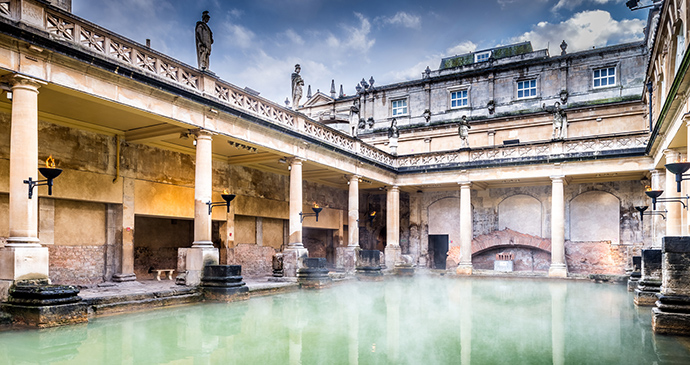
Bath
Bath’s setting, nestled within a deep hollow in a hill, is as dramatic as it is beautiful. And while I can’t deny just a hint of bias when assaying the merits of what has effectively become my home city, it’s fair to suggest that Bath has few peers. For all its many fine attributes – including some wonderfully idiosyncratic museums, its reinvented spa and of course the Roman Baths – the city’s real glory is its outstanding confection of architectural forms, for which it has to thank the likes of Richard ‘Beau’ Nash, Ralph Allen, John Wood the Elder and John Wood the Younger who, between them, transformed the entire fabric of the city during the 18th century. Monumental ensembles such as The Circus, the Royal Crescent, Pulteney Bridge and Pulteney Street stand cheek-by-jowl with Neoclassical Palladian terraces and squares, and elegantly landscaped parks. In addition, there are some delicious pockets of greenery to escape to, as well as a brace of invigorating walks within touching distance, including the Bath Skyline, one of my favourite outings.
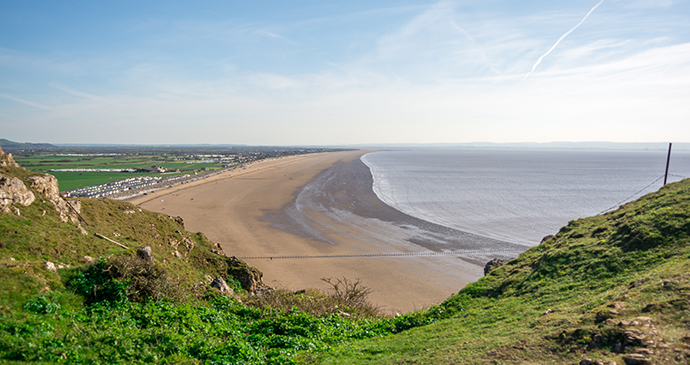
Brean Down
A towering, blade-shaped peninsula nosing out into the Bristol Channel, Brean Down is essentially the last remnant of the Mendip Hills escarpment. A Site of Special Scientific Interest (SSSI) and now owned by the National Trust, the walk up to and around the headland, which rises to a height of 318ft, should take no more than 90 minutes, notwithstanding time spent admiring the views, and perhaps a stop for a picnic lunch; either way, this is one exhilarating jaunt. Beginning at the Brean Down Café, head up the steep set of steps to the top of the down. Here, take the path to the left, which shadows the southern slopes and continue across the clifftop meadow, brushed with hawthorn trees and, in summer, clumps of purple heather over which butterflies skim and dart. There’s abundant wildlife up here, and you’ll likely spot stonechats and skylarks, and maybe the occasional peregrine falcon – keep an eye out too for the rare white rock rose flower, which is partial to the thin limestone soil prevalent here and is usually present between May and July.
The peninsula culminates in the substantial ruins of a Victorian fort, one of a series of so-called Palmerston Forts constructed throughout coastal areas in the 1860s (and named after the prime minister at the time) to counter the threat of French invasion, though in the event this one never saw action. It did, though, serve as an artillery battery during World War II, then later as a testing site for rockets. Widely dispersed across the tip of Brean Down, the many structures that comprise the fort include the old barracks, officer’s mess, magazine and observation post, and the rusting supports of two massive gun emplacements.
The views are of course sensational: south Wales, Exmoor, the Quantocks, the Mendips and the Somerset Levels – and directly in front of you, Steep Holm, which is about as close as you are going to get to the island without actually being on it. From the fort, you can return the way you came, or you can head back along the other (northern) path, following it around to the right before arriving back at the steps. Note that, although dogs are permitted up here, they must be kept under close control (preferably on a lead), lest your pooch decides to venture seawards.
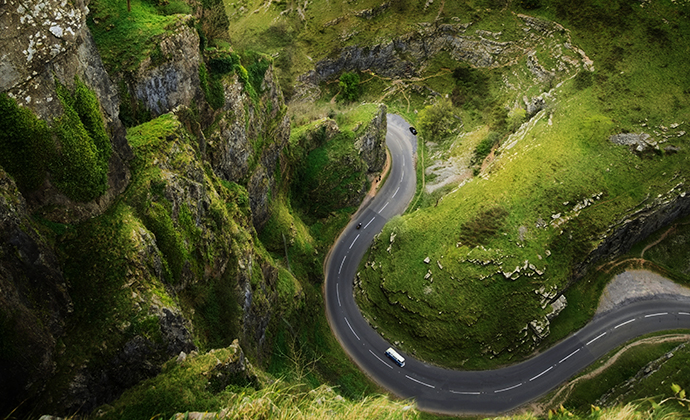
Cheddar Gorge
Cheddar Gorge is often rated one of Britain’s finest natural phenomena, a claim that’s not without substance. If nothing else, it’s certainly England’s largest canyon – an impressive fact for starters. A true river gorge, Cheddar was formed millions of years ago by glacial meltwater, the resultant river creating the massive fissure you see today.
The most exciting approach to the gorge is along the B3135 from the east. Until 1800, there was no carriage road through here; instead access would have been by horse or pack mule, or on foot – these days a narrow, tightly twisting road shadowed by towering cliff sides wends its way through the two-mile chasm.
Whatever your mode of transport, this demands concentration, not least because there are so many distractions; in addition to the gorge’s awesome natural beauty, feral Soay sheep – with their distinctive, shaggy chocolate coats – and wild goats cling improbably to the sides, while buzzards, falcons and kestrels circle high above. Unsurprisingly, it’s a landscape beloved of climbers, the gorge presenting some of the country’s most challenging terrain. These days, the gorge is owned by the National Trust, though the caves and other attractions, as well as the parking facilities, are not.
Cheddar and tourism have long gone hand in hand. The village had in fact established itself as a popular tourist attraction long before the opening of the caves, thanks in large part to the opening of the Great Western Railway branch line through Cheddar in 1869. The railway line has long gone, and these days it’s the caves and its attendant attractions that sustain the local economy.
The crowds (in summer at least) can be off-putting, as can the litany of souvenir shops and cafés lining the main road. Car parking, too, is a pain, though there are designated pay-and-displays dotted about, which cost around £5 a day. The village of Cheddar itself is nothing to get too worked up about, though there are one or two agreeable pubs should you wish to stick around.
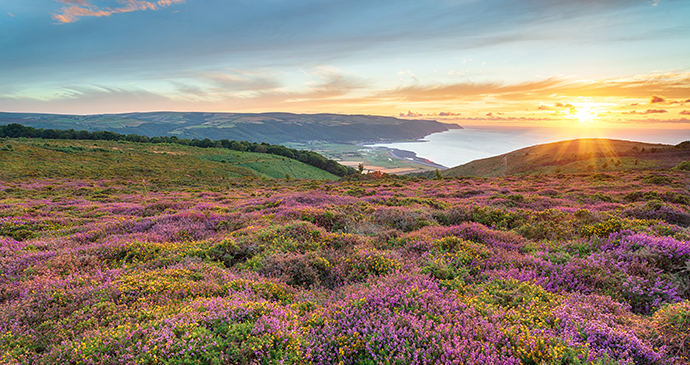
Exmoor
Designated a National Park in 1954, enchanting Exmoor is for many the real highlight of a visit to Somerset. It’s a soft landscape of rounded hills, splashed yellow from gorse, and purple in late summer when the heather blooms, and of deep wooded valleys. It has its coast, too, adding pebble coves and sea views to its repertoire, along with the many rivers that race to the sea from the high ground, slicing into the soft sandstone; the Exmoor coast boasts the tallest sea cliffs anywhere in England. This coastal strip is by far the most touristed part of Exmoor, particularly the winsome coastal village of Porlock, though the nearby weir and marshes are just as worthy.
The lozenge of glorious countryside between Porlock, Minehead, the A39 and the sea offers an infinite choice of woodland trails and quiet lanes taking you through arguably the prettiest villages of Exmoor: Luccombe, Allerford and Selworthy, three National Trust villages that are quintessentially rural England with their thatched cottages strung along narrow lanes. There’s medieval Dunster, too, dominated by its castle – one of just three in Somerset – though this is by far the grandest.
But, for me, it’s inland Exmoor that truly excels: high heather- and bracken-clad moorland and the patchwork green fields of the lowlands. On a sunny day it’s sublime, in rain it can be utterly bleak, though at least driving is easier on the high, open-view lanes. The rivers Exe and Barle, and their many tributaries, break up the ‘billowy heath’ in southern Exmoor with deep wooded valleys giving walkers and mountain bikers that perfect combination of high moor and sheltered combes. This consistently seductive landscape is dotted with a multiplicity of comely little villages – Exford, Winsford and Hawkridge among them – that offer plenty of opportunities for replenishment and respite.
There’s a wonderful variety of wildlife too; red deer – Britain’s largest native mammal – have existed here since prehistoric times and Exmoor is now one of the last remaining indigenous populations in the country. For many, the real highlight is seeing Exmoor ponies, which roam freely across open moorland. Elsewhere, you can seek out otters, bats and owls alongside all manner of rare bird and butterfly species. With so much of the park managed by the National Trust, clear signposting makes walking – of which there are endless possibilities – a real pleasure, though the landscape is totally geared up for a whole panoply of adventurous pursuits, organised or otherwise: cycling and mountain biking, horse- and pony riding, and even stargazing, Exmoor being a designated International Dark Sky Reserve.
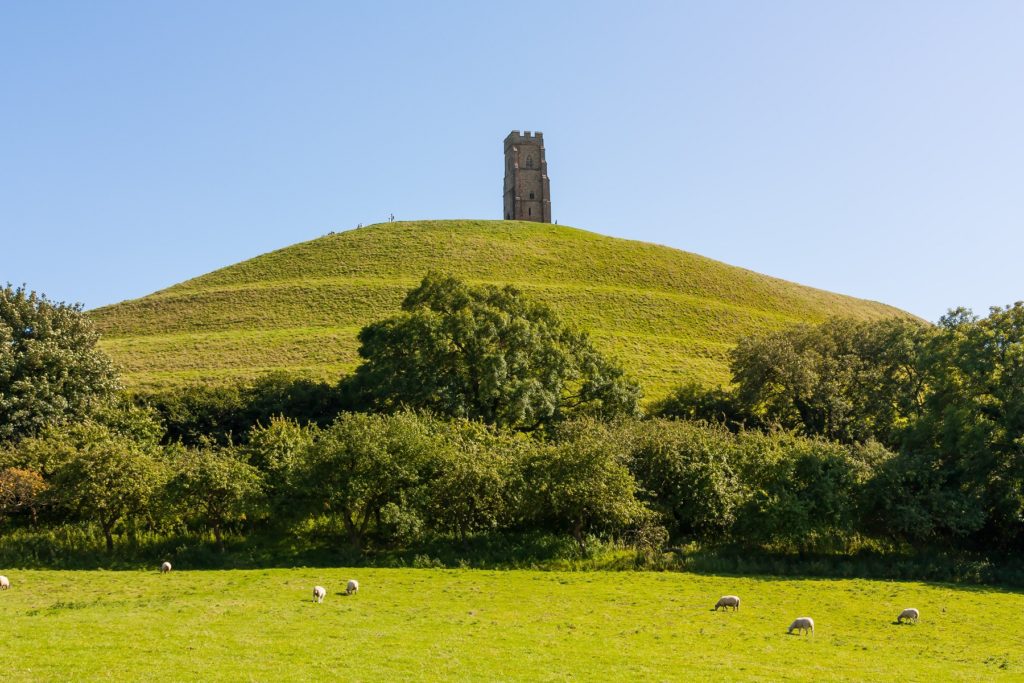
Glastonbury
Whatever your preconceptions of Glastonbury, they’re probably true. Ordinarily this’d be a fairly mundane little market town, were it not for a high street teeming with psychedelically painted shops, cafés and healing centres bearing names like Man, Myth and Magik, The Speaking Tree, and the Chocolate Love Temple, and an assortment of oddball characters – hippies, druids, knights, pixies (not real ones) – nonchalantly going about their business.
But that’s really only the half of it. With over 70 different faith groups present, it’s little wonder that Glastonbury retains its own unique personality; there’s nowhere else quite like it in Somerset, or, for that matter, the country. Central to it all is the abbey, though there’s plenty more to keep you occupied if you’ve got the appetite and the stamina, including the Chalice Well and, nearby, the engaging Rural Life Museum. Not forgetting Glastonbury Tor, which is within easy walking distance of the town centre.
About halfway up the High Street, wedged between a pair of shops, is the Tribunal. Dating from the early 15th century, this handsomely weathered, two-storey medieval townhouse takes its name (erroneously as it turns out) from the time when it was purported to have been a bishop’s court, though there’s never been any evidence to support this and it was, quite likely, just a merchant’s house.
Today, this venerable old building holds the Glastonbury Lake Village Museum (English Heritage), which recalls the history of the long-since vanished Glastonbury Lake Village, a local Iron Age island settlement discovered by amateur archaeologist Arthur Bulleid in the late 19th century. Among the many items retrieved by Bulleid (most of which were in an excellent condition owing to the preservational qualities of the peat-rich soil), the most impressive was a stash of some Bronze Age bone jewellery.
Glastonbury Tor
Rearing up sharply from the iron-flat Levels and visible for miles around, Somerset’s giant mystic hill (518ft) is yet another local landmark bound by legend – among them that the hill was home to one Gwyn ab Nudd, Lord of the Celtic Underworld.
The best way up the tor is via a circular walk starting in the town centre: at the top of the High Street, turn right on to Chilkwell Street then left up Dod Street; cross the field and walk along Stone Down Lane before turning right along a path through a field, where you begin the ascent (in any case it’s all well signposted).
Return down on the exact opposite side, which brings you out near the Chalice Well – you can of course do this in reverse. Although it’s not an exacting climb, a reasonable level of fitness (and some half-decent boots) helps. Crowning the hill is St Michael’s Tower, which is all that survives of the original 14th-century church. But of course you come here for the views, which are stupendous: on a clear day it almost feels as if there’s not a single part of Somerset that you can’t see.
Glastonbury Abbey
Founded in the 7th century, possibly even earlier, Glastonbury Abbey can lay fair claim to being the country’s oldest Christian site. Enlarged by St Dustan in the 10th century, it suffered a catastrophic fire in 1184, which pretty much gutted the entire complex and necessitated a complete rebuilding job. Following that, the abbey never looked back, casting its territorial claims as far north as Wales and the Midlands, and all the way down to the south coast, becoming an ecclesiastical powerhouse that was second only to Westminster Abbey in London.
The burial place of kings Edmund I, Edgar I and Edmund II, its influence spread far and wide; it’s also claimed that Glastonbury had the largest collection of books outside the library of Alexandria in Egypt. Upon the Dissolution of the Monasteries in 1539, many of the buildings were plundered and stripped, leaving the complex to crumble. Above all though, the abbey remains central to the Arthurian story, which despite the dubious associations, has fired the imagination of pilgrims and visitors for centuries.
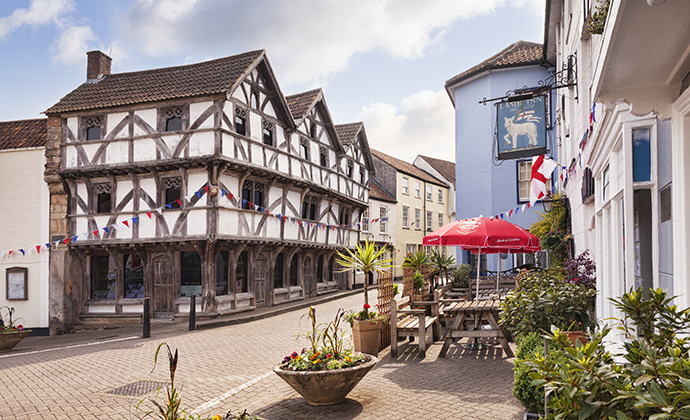
The Mendips
Wedged between tracts of gently rolling farmland south of Bristol and the northern fringes of the iron-flat Levels, the Mendips – an area covering just 22 miles (east to west) and peaking at 325m – don’t get the acclaim that they should. Richly textured by history and nature, this sparsely populated limestone escarpment is permeated with fissures, tunnels and chambers that have given rise to all manner of dramatic formations: deep canyons, dry valleys and rocky outcrops. Another distinctive feature of the Mendips are its dry-stone walls – many of which have existed since medieval times – that criss-cross the largely treeless plateau. The odd, isolated farmstead aside, there’s very little human activity here – indeed, there are but a couple of villages located on the ridge itself.
The toponymy of Mendip is unclear, though the most likely explanation is that the name derives from the medieval word ‘Mynes-Deepes’ (as in ‘Deep Mines’), which would seem reasonable given that the area has been worked commercially for lead and zinc since Roman times. Indeed, history has firmly left its mark on the Mendips: Iron Age hillforts, abandoned mine workings, burial mounds and World War II remains are just some of the features that litter the landscape. This wonderfully diverse topography guarantees limitless opportunities for leisure pursuits: caving, climbing, mountain biking, horseriding, fishing, birdwatching and, of course, walking, the possibilities for which are limitless; it’s one of my favourite walking destinations anywhere, and not just in Somerset.
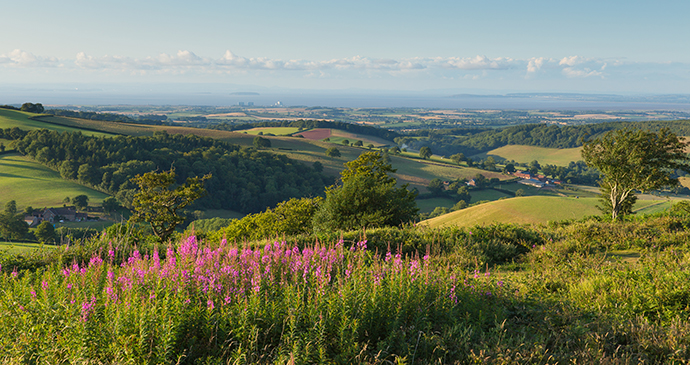
The Quantocks
Designated England’s first Area of Outstanding Natural Beauty in 1956, the Quantock Hills tend to fly under most people’s radar, possibly because of their proximity to Exmoor or possibly just because they’re just not that well known. Either way, this 12-mile ridge, wedged in between Bridgwater, Taunton and Minehead, is an alluring mixed landscape of ancient oak woodland, secluded combes and open heathland stalked by red deer and wild ponies. It’s fabulous, and still mostly untouched, walking and riding country with numerous scenic trails, among them the long-distance Coleridge Way, named after the great Romantic poet Samuel Taylor Coleridge, the one name you’ll come across time and again here in the Quantocks. Coleridge lived in Nether Stowey, one of the Quantocks’ few sparsely populated villages and hamlets. It was here too that I went to school, so the Quantocks very much resonate with me, yet the irony is that I was largely cocooned within my own little world so never really got to explore them, save for the occasional trip down into the village for supplies. The boundary of the Quantocks AONB actually extends to, and includes, a short section of the coast, embracing Kilve and its famous fossil beach.
Related books
For more information, see our guide to Somerset:
Related articles
Despite competing claims from other counties, there is no question: Somerset is cider’s spiritual home.
These are some of the more unlikely locations for vineyards in England… hicc!
Magical, mysterious and full of classic English charm, this Somerset market town is the perfect choice for a weekend away.
Take it slow and savour these pockets of tranquility.
Take in the rich views along wooded valleys, open moorlands and dramatic gorges on this 5-mile walk.
Some people go to church, others go to churches.
